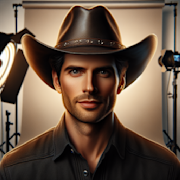Classic Cinema's Unspoken Language: The Power of Visual Storytelling

In the world of filmmaking, storytelling is not always confined to dialogue and narration. Classic cinema has mastered the art of visual storytelling, using the power of images, composition, and cinematography to convey emotions, themes, and messages to the audience. In this blog post, we will explore the importance of visual storytelling in classic cinema and how it continues to influence filmmakers today.
The Silent Era: Pioneering Visual Storytelling
The silent era of cinema, from the late 19th century to the late 1920s, was a time when filmmakers had to rely solely on visual storytelling to convey their narratives. Directors such as D.W. Griffith and Sergei Eisenstein revolutionized the medium by experimenting with editing techniques, camera movements, and framing to create powerful storytelling.
One of the most iconic examples of visual storytelling from the silent era is Fritz Lang’s “Metropolis” (1927). Through its stunning visuals and innovative use of special effects, the film conveys themes of class struggle and industrialization without a single line of dialogue. The iconic imagery of the machine-like cityscape and the robot Maria have become timeless symbols of visual storytelling in cinema.
The Golden Age of Hollywood: Elevating Visual Storytelling
During the golden age of Hollywood in the 1930s to the 1950s, filmmakers continued to refine the art of visual storytelling. Directors such as Alfred Hitchcock and Orson Welles used visual cues, lighting, and framing to create tension, suspense, and drama in their films.
Hitchcock’s “Psycho” (1960) is a masterclass in visual storytelling, with its iconic shower scene and use of point-of-view shots. The film’s innovative camera work and editing techniques have influenced generations of filmmakers and solidified Hitchcock’s reputation as the “Master of Suspense.”
Modern Cinema: Visual Storytelling in the Digital Age
In the digital age of cinema, visual storytelling has evolved with advances in technology and CGI. Filmmakers such as Christopher Nolan and Denis Villeneuve continue to push the boundaries of visual storytelling, using IMAX cameras and high-definition special effects to create immersive cinematic experiences.
Nolan’s “Inception” (2010) is a testament to the power of visual storytelling in modern cinema. The film’s dream-like sequences and shifting realities are brought to life through stunning visual effects and intricate production design. Nolan’s innovative use of visual storytelling has set a new standard for filmmakers in the digital age.
The Influence of Classic Cinema on Contemporary Filmmaking
Despite the advancements in technology and filmmaking techniques, the influence of classic cinema on contemporary filmmakers is still evident today. Directors such as Quentin Tarantino and Guillermo del Toro pay homage to classic films through their use of visual storytelling and references to iconic cinematic moments.
Tarantino’s “Pulp Fiction” (1994) is a prime example of a film that draws inspiration from classic cinema while putting a modern twist on visual storytelling. The film’s nonlinear narrative and stylized visuals pay homage to the golden age of Hollywood while establishing Tarantino as a visionary filmmaker in his own right.
Conclusion
In conclusion, visual storytelling is a powerful tool that has been utilized by filmmakers throughout the history of cinema. From the silent era to modern Hollywood blockbusters, the power of images and composition to convey emotions and themes is a timeless aspect of filmmaking. Classic cinema continues to inform and inspire contemporary filmmakers, reminding us of the enduring influence of visual storytelling in the art of cinema.

Alberto Miller
Movie Fanatic
More From Classics Authority Movies

Movie
Frankenstein (1931)

Movie
Butch Cassidy and the Sundance Kid (1969)

Movie
The Godfather Part II (1974)

Movie
Classics Reimagined: Contemporary Films Paying Homage to the Golden Age

Movie
A Matter of Life and Death (1946)

Movie
Unearthed Treasures: Forgotten Classics Resurfacing in the Digital Age





